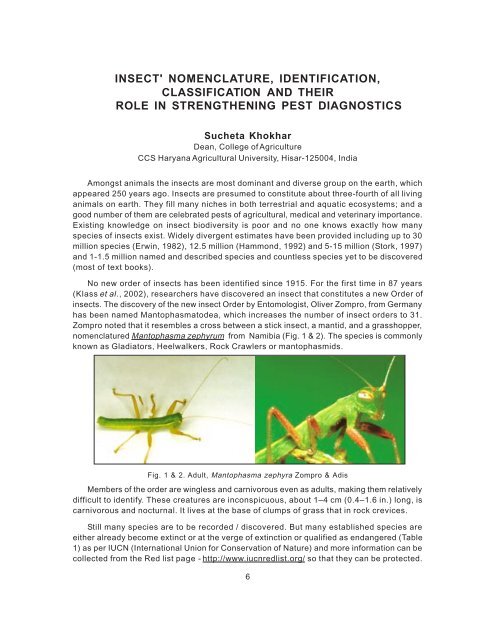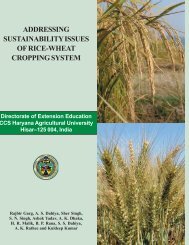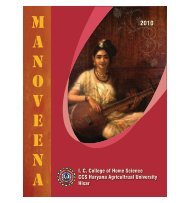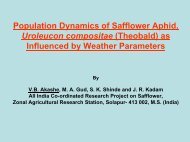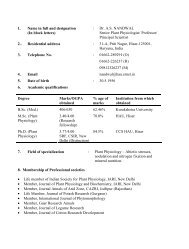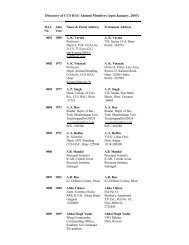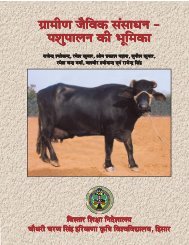Foreword - CCS HAU, Hisar
Foreword - CCS HAU, Hisar
Foreword - CCS HAU, Hisar
Create successful ePaper yourself
Turn your PDF publications into a flip-book with our unique Google optimized e-Paper software.
INSECT' NOMENCLATURE, IDENTIFICATION,<br />
CLASSIFICATION AND THEIR<br />
ROLE IN STRENGTHENING PEST DIAGNOSTICS<br />
Sucheta Khokhar<br />
Dean, College of Agriculture<br />
<strong>CCS</strong> Haryana Agricultural University, <strong>Hisar</strong>-125004, India<br />
Amongst animals the insects are most dominant and diverse group on the earth, which<br />
appeared 250 years ago. Insects are presumed to constitute about three-fourth of all living<br />
animals on earth. They fill many niches in both terrestrial and aquatic ecosystems; and a<br />
good number of them are celebrated pests of agricultural, medical and veterinary importance.<br />
Existing knowledge on insect biodiversity is poor and no one knows exactly how many<br />
species of insects exist. Widely divergent estimates have been provided including up to 30<br />
million species (Erwin, 1982), 12.5 million (Hammond, 1992) and 5-15 million (Stork, 1997)<br />
and 1-1.5 million named and described species and countless species yet to be discovered<br />
(most of text books).<br />
No new order of insects has been identified since 1915. For the first time in 87 years<br />
(Klass et al., 2002), researchers have discovered an insect that constitutes a new Order of<br />
insects. The discovery of the new insect Order by Entomologist, Oliver Zompro, from Germany<br />
has been named Mantophasmatodea, which increases the number of insect orders to 31.<br />
Zompro noted that it resembles a cross between a stick insect, a mantid, and a grasshopper,<br />
nomenclatured Mantophasma zephyrum from Namibia (Fig. 1 & 2). The species is commonly<br />
known as Gladiators, Heelwalkers, Rock Crawlers or mantophasmids.<br />
Fig. 1 & 2. Adult, Mantophasma zephyra Zompro & Adis<br />
Members of the order are wingless and carnivorous even as adults, making them relatively<br />
difficult to identify. These creatures are inconspicuous, about 1–4 cm (0.4–1.6 in.) long, is<br />
carnivorous and nocturnal. It lives at the base of clumps of grass that in rock crevices.<br />
Still many species are to be recorded / discovered. But many established species are<br />
either already become extinct or at the verge of extinction or qualified as endangered (Table<br />
1) as per IUCN (International Union for Conservation of Nature) and more information can be<br />
collected from the Red list page - http://www.iucnredlist.org/ so that they can be protected.<br />
6


